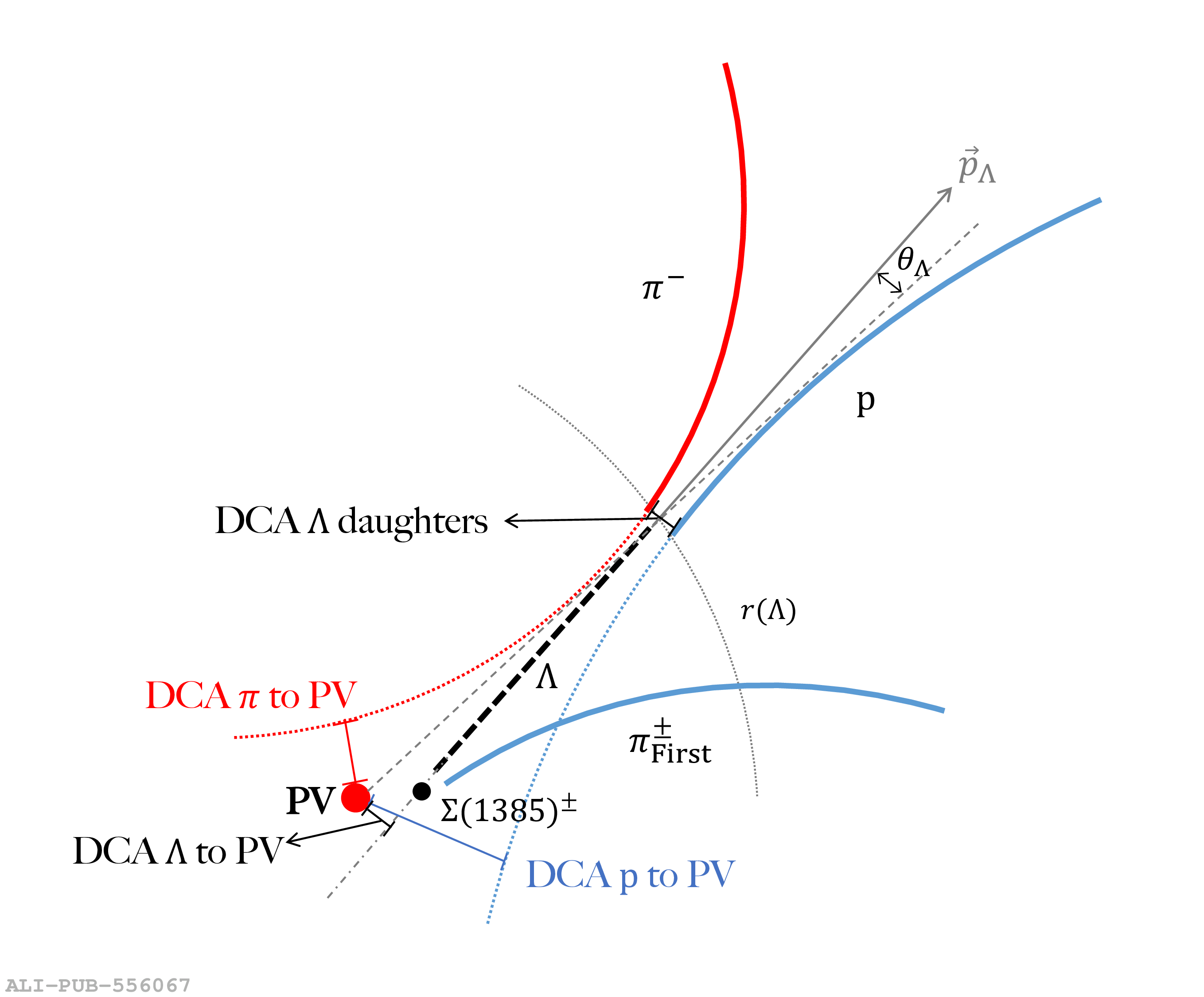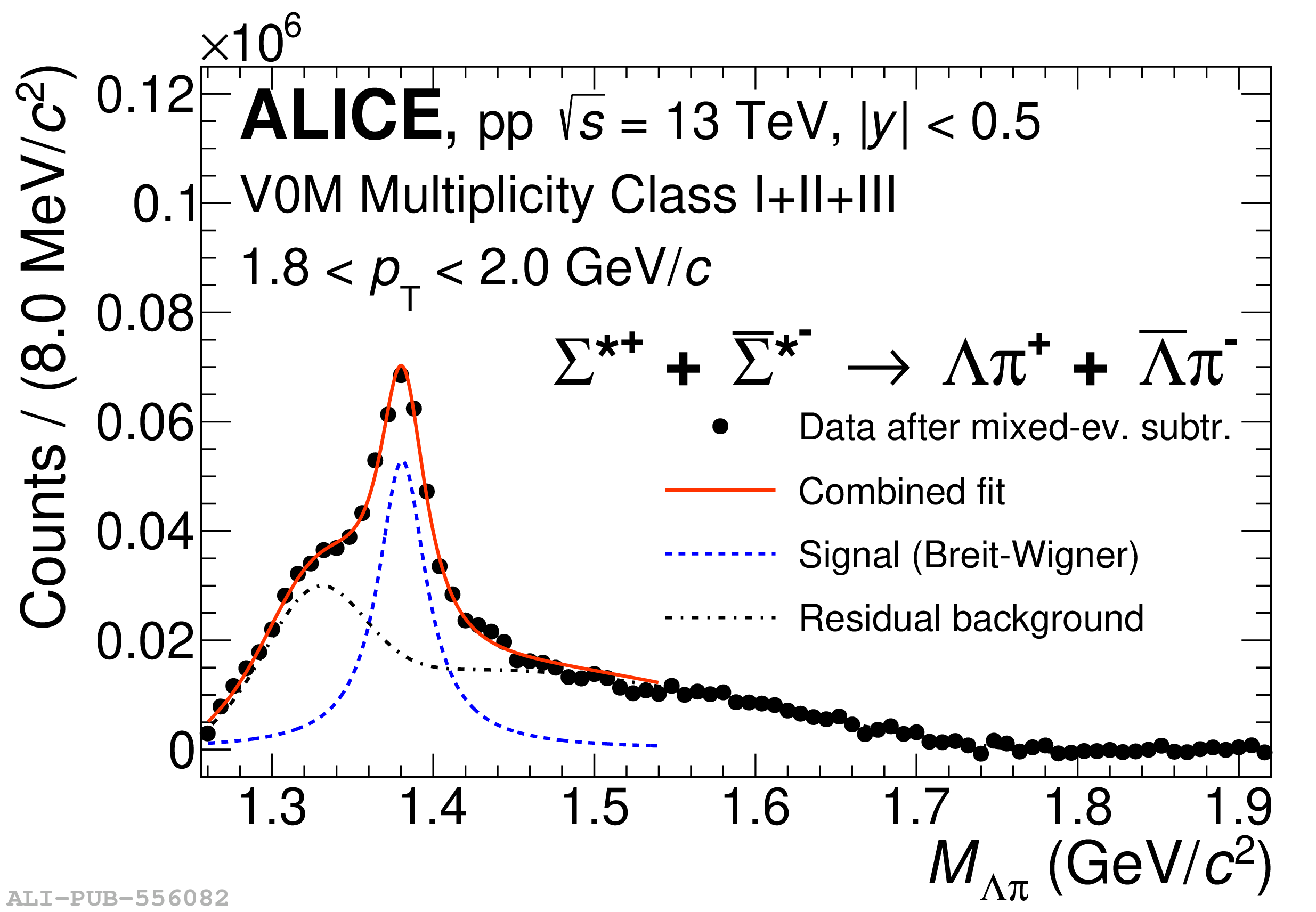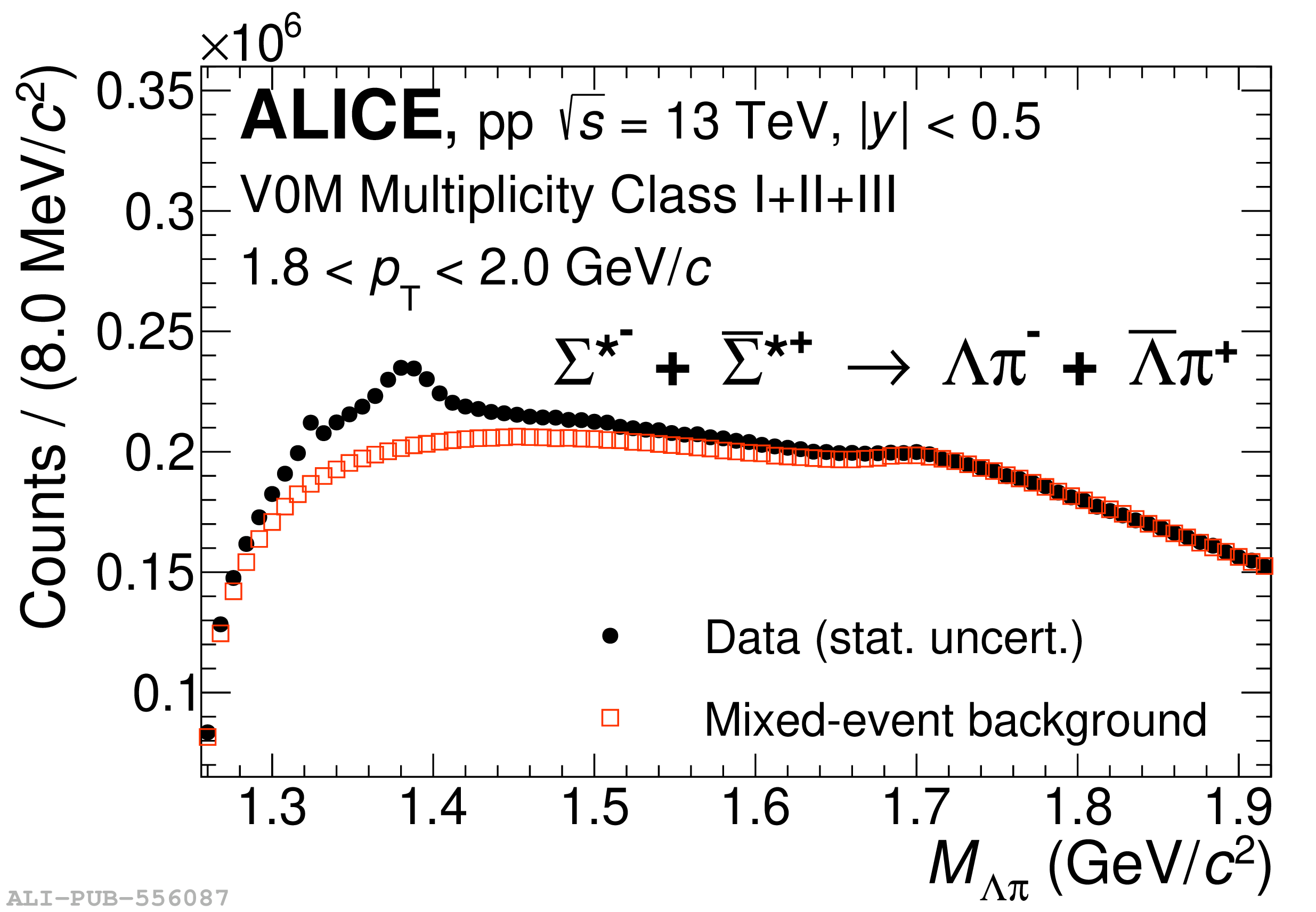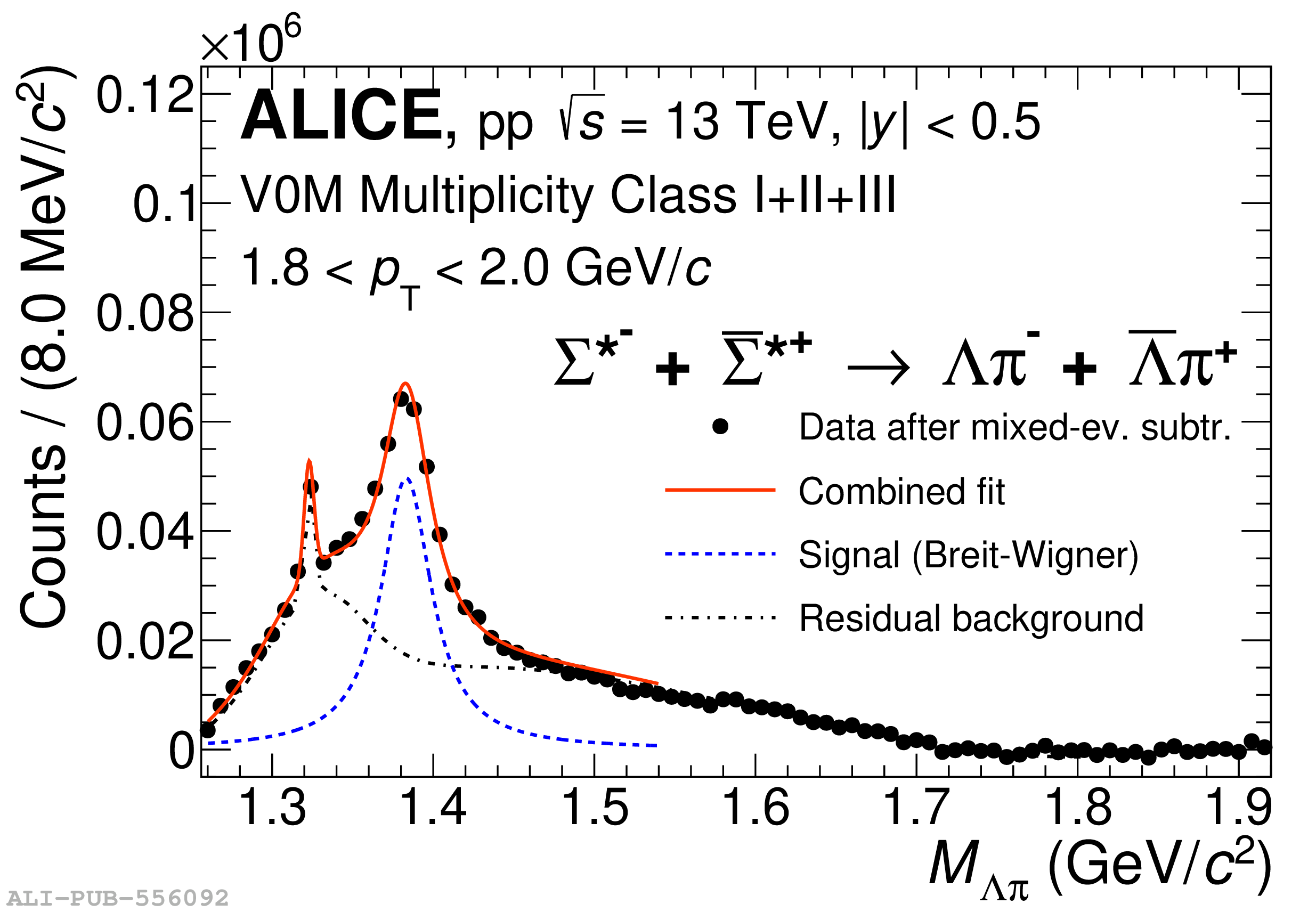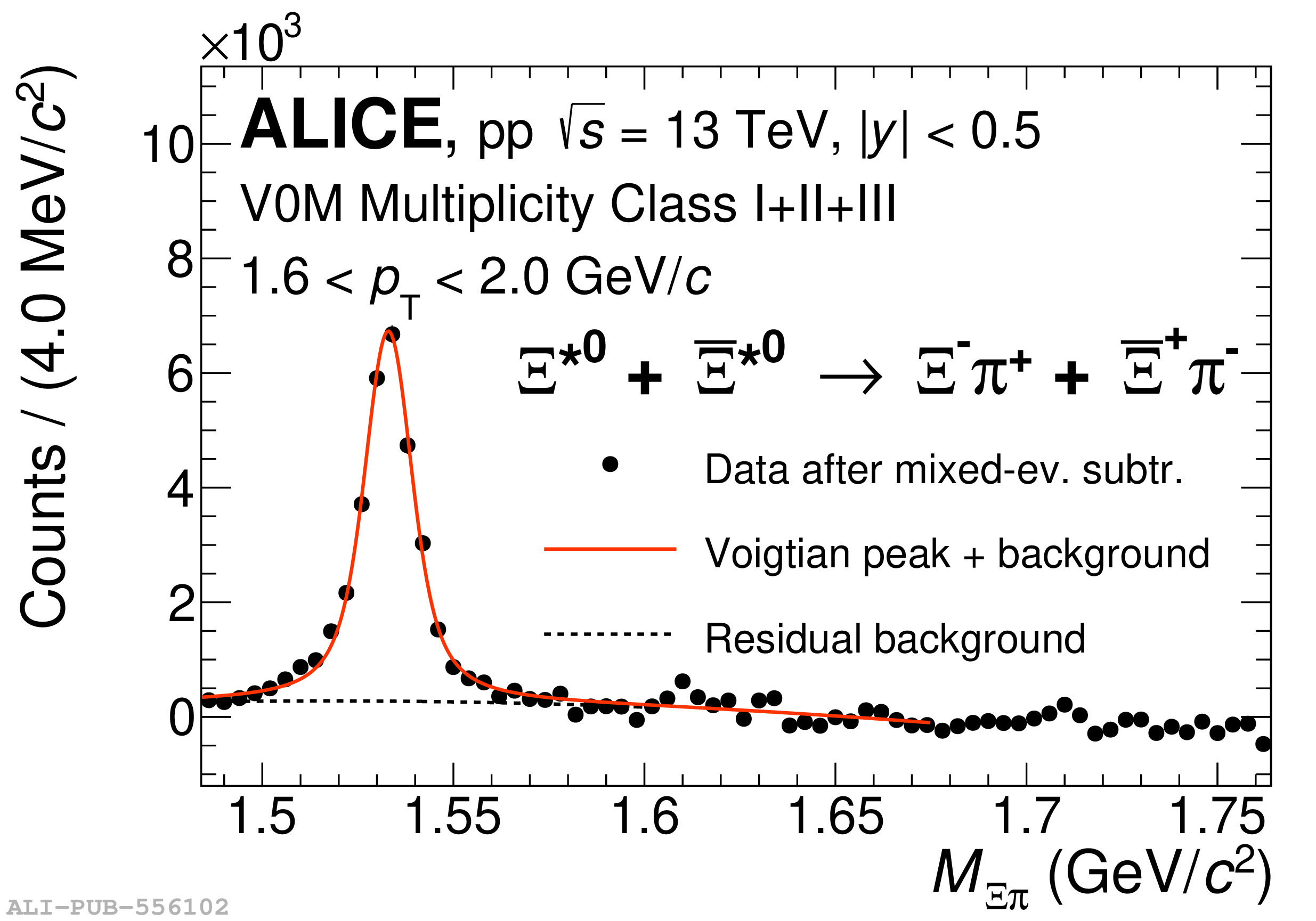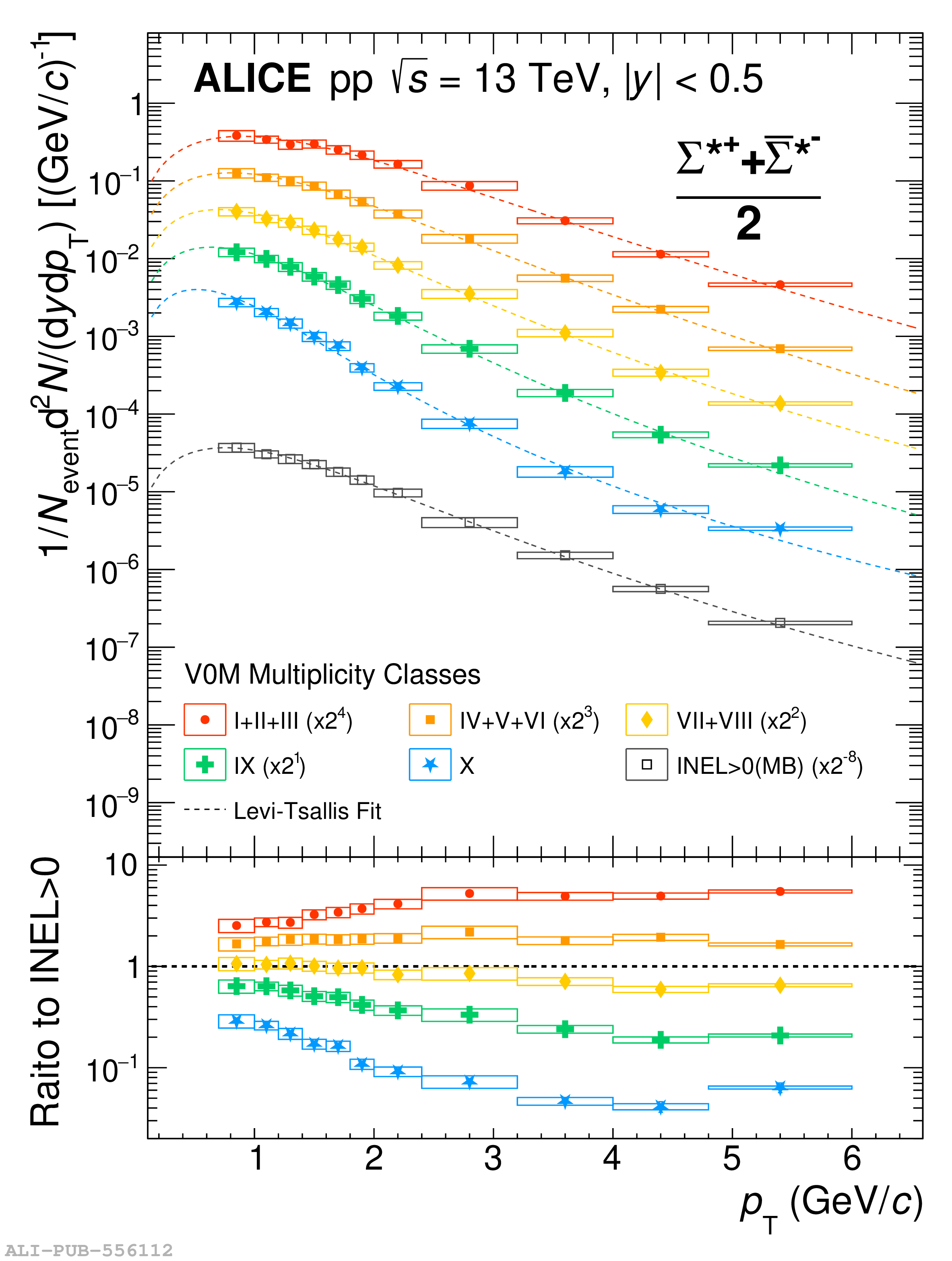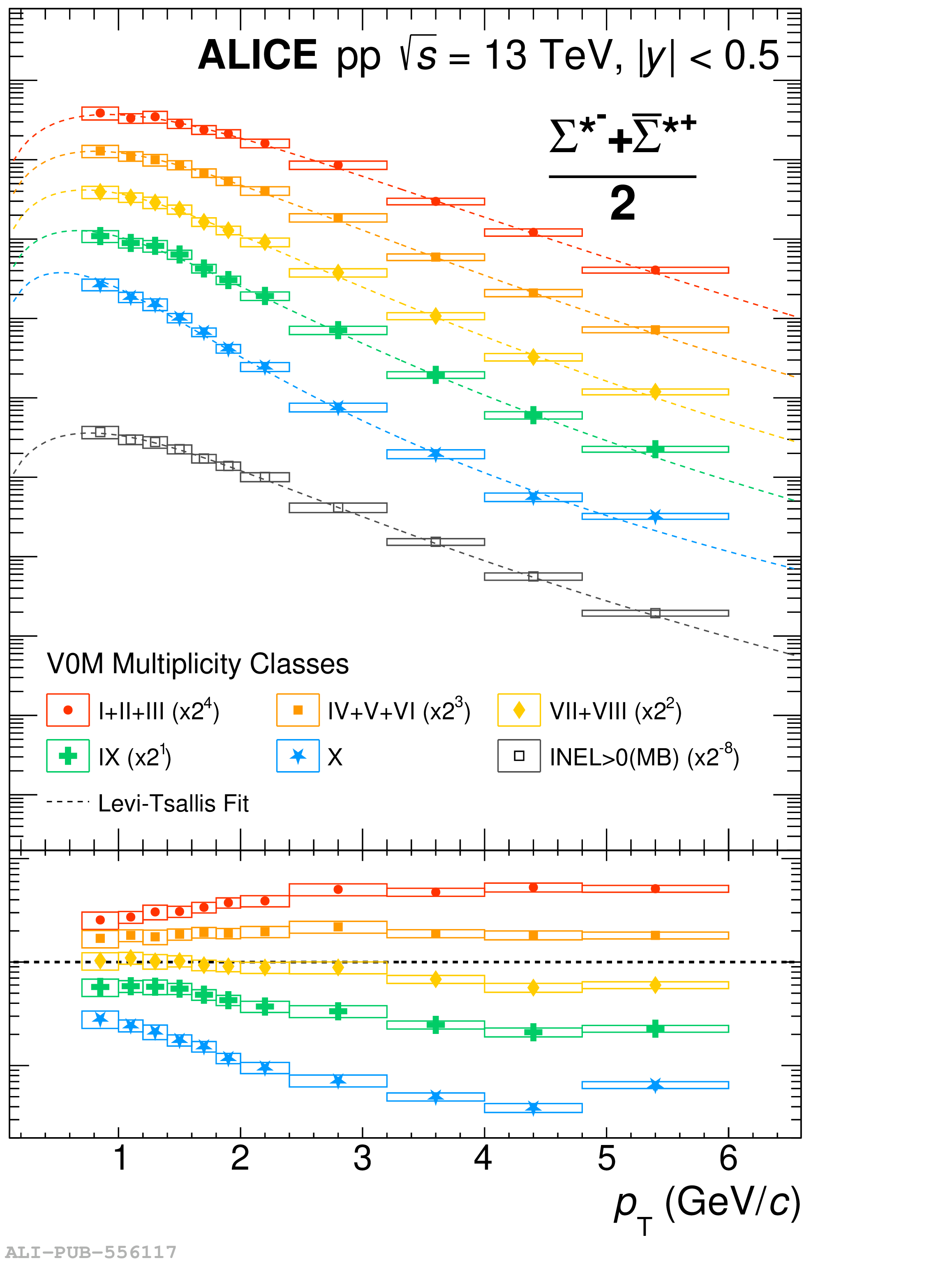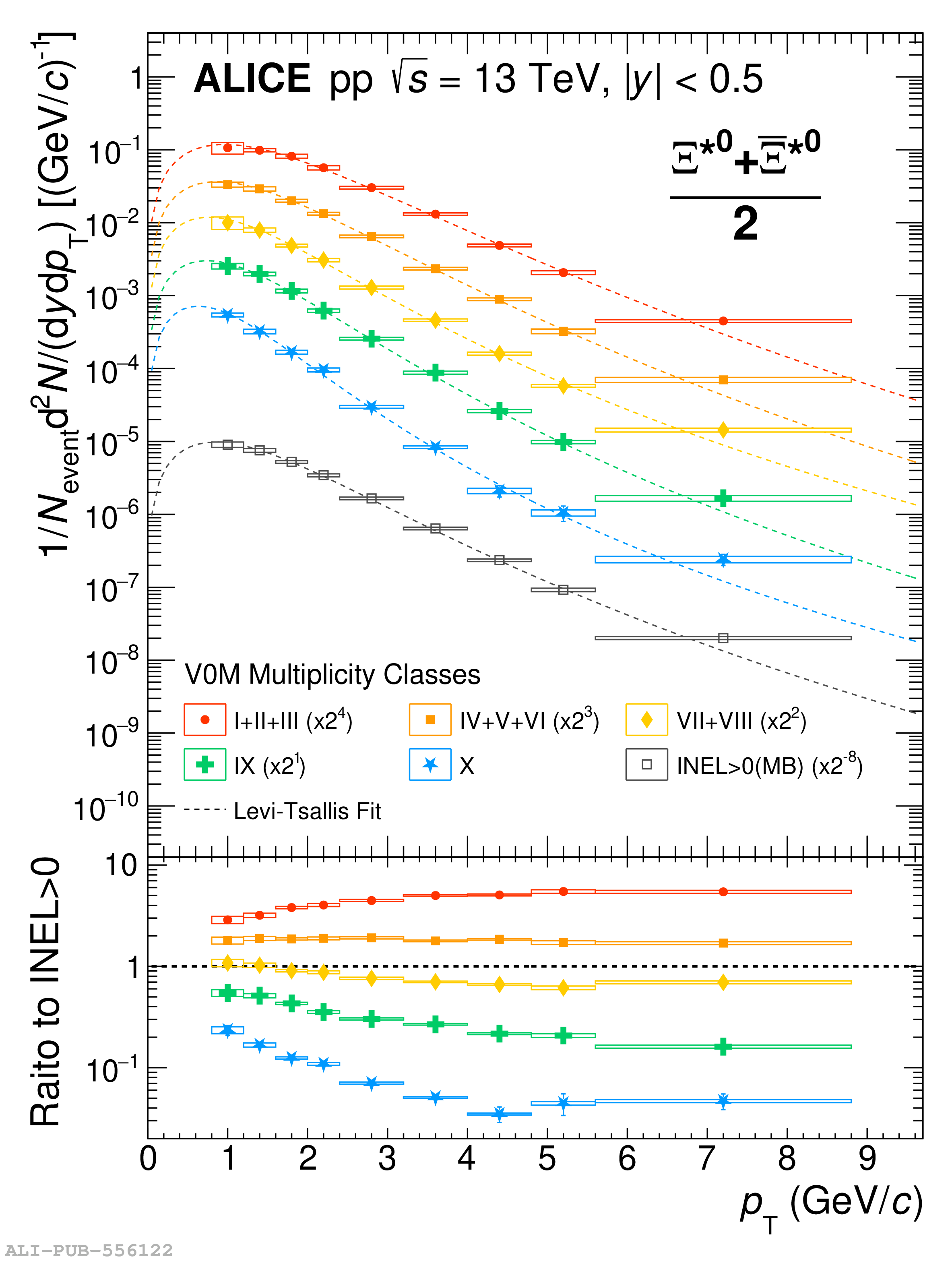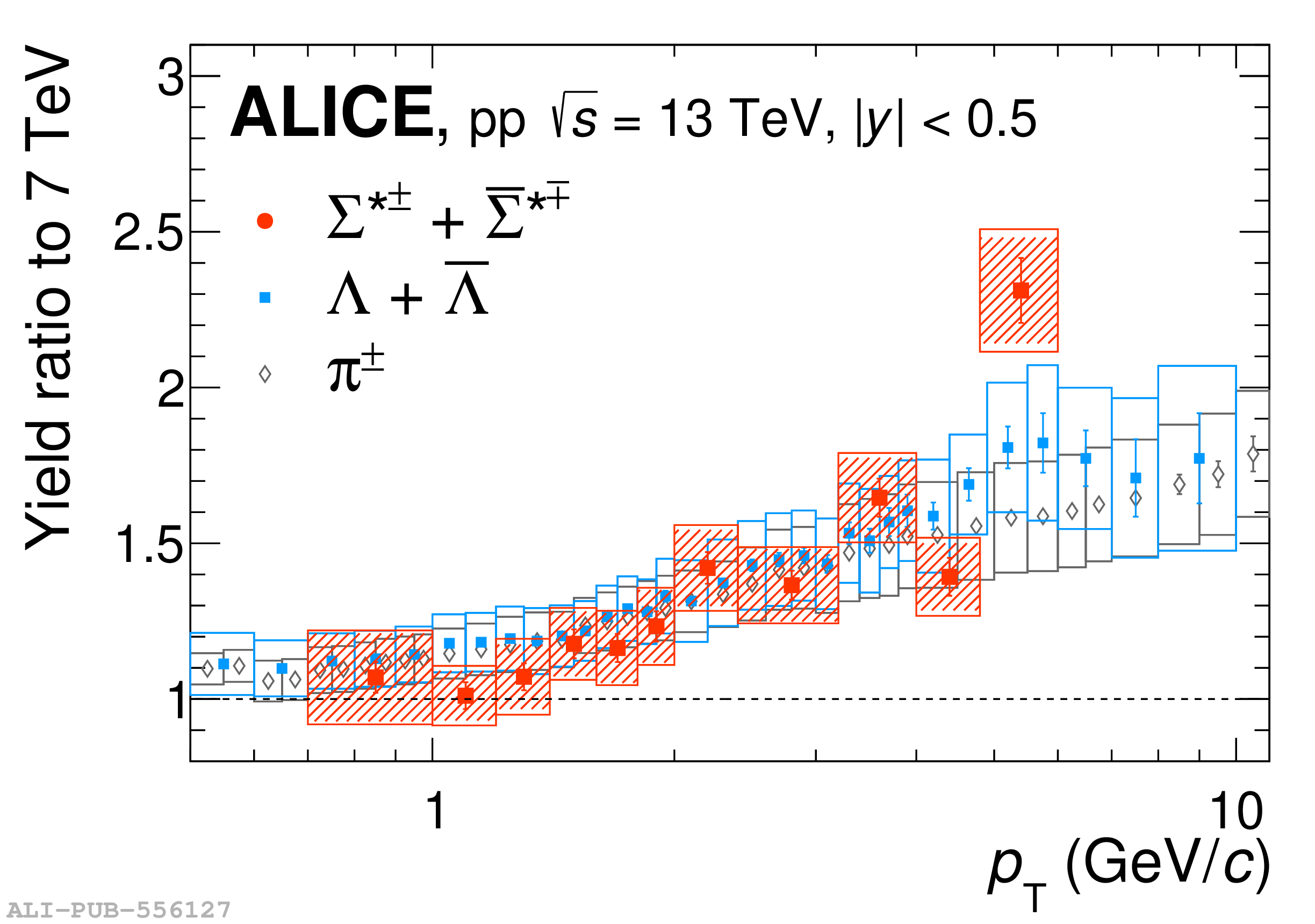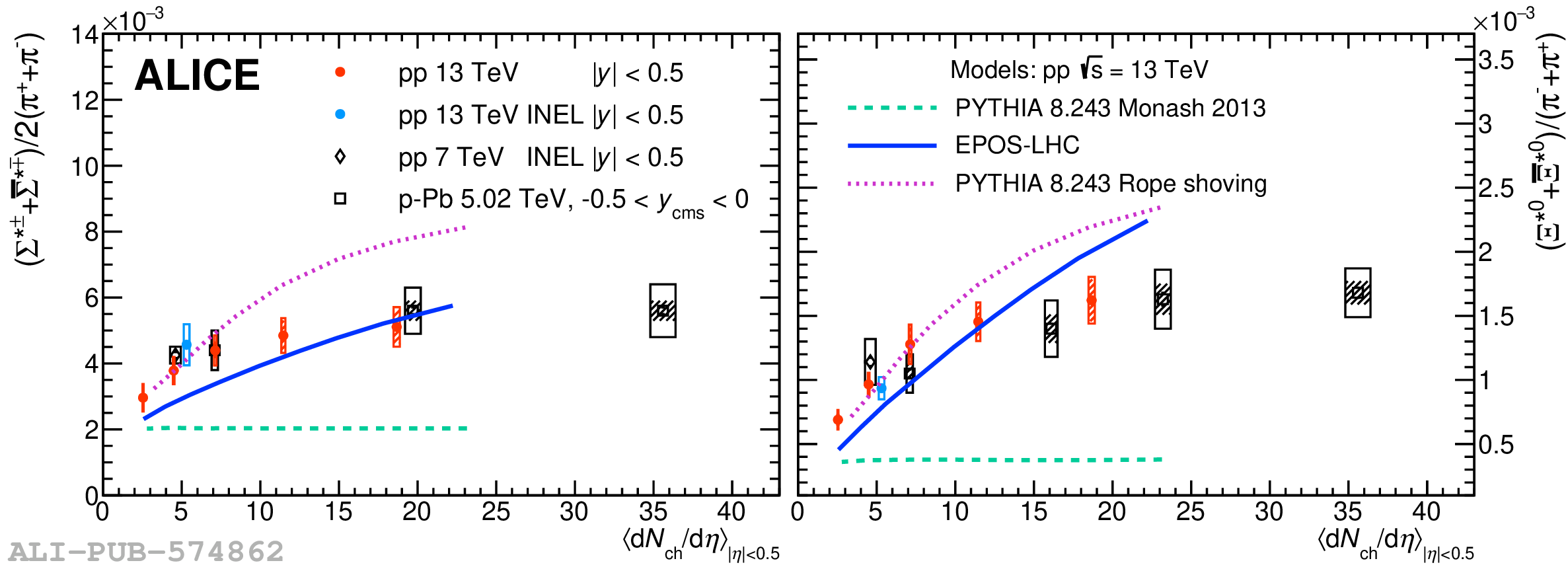The production yields of the $\Sigma(1385)^{\pm}$ and $\Xi(1530)^{0}$ resonances are measured in pp collisions at $\sqrt{s}=13$ TeV with ALICE. The measurements are performed as a function of the charged-particle multiplicity $\langle \mathrm{d}N_\mathrm{ch}/\mathrm{d}\eta \rangle$, which is related to the energy density produced in the collision. The results include transverse momentum ($p_{\rm T}$) distributions, $p_{\rm T}$-integrated yields, mean transverse momenta of $\Sigma(1385)^{\pm}$ and $\Xi(1530)^{0}$, as well as ratios of the $p_{\rm T}$-integrated resonance yields relative to yields of other hadron species. The $\Sigma(1385)^{\pm}/\pi^{\pm}$ and $\Xi(1530)^{0}/\pi^{\pm}$ yield ratios are consistent with the trend of the enhancement of strangeness production from low to high multiplicity pp collisions, which was previously observed for strange and multi-strange baryons. The yield ratio between the measured resonances and the long-lived baryons with the same strangeness content exhibits a hint of a mild increasing trend at low multiplicity, despite too large uncertainties to exclude the flat behaviour. The results are compared with predictions from models such as EPOS-LHC and PYTHIA 8 with Rope shoving. The latter provides the best description of the multiplicity dependence of the $\Sigma(1385)^{\pm}$ and $\Xi(1530)^{0}$ production in pp collisions at $\sqrt{s}=13$ TeV.
JHEP 05 (2024) 317
HEP Data
e-Print: arXiv:2308.16116 | PDF | inSPIRE
CERN-EP-2023-172
Figure group

